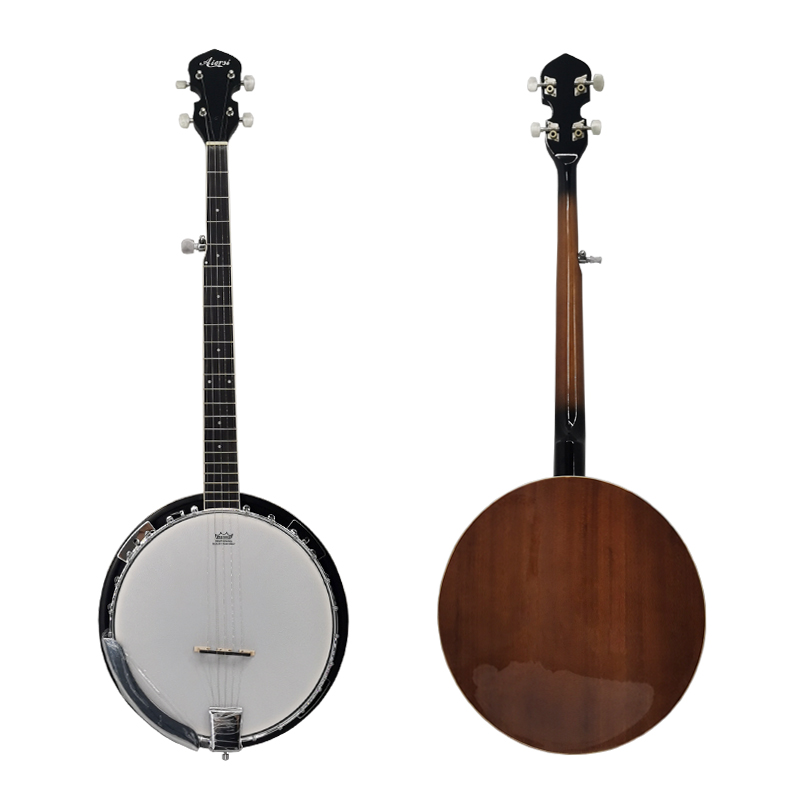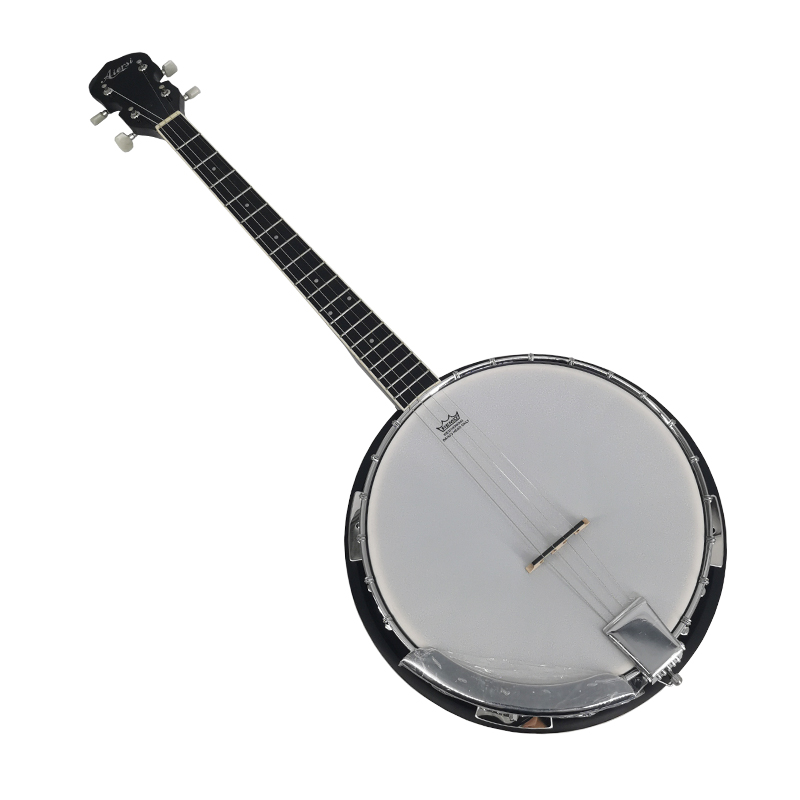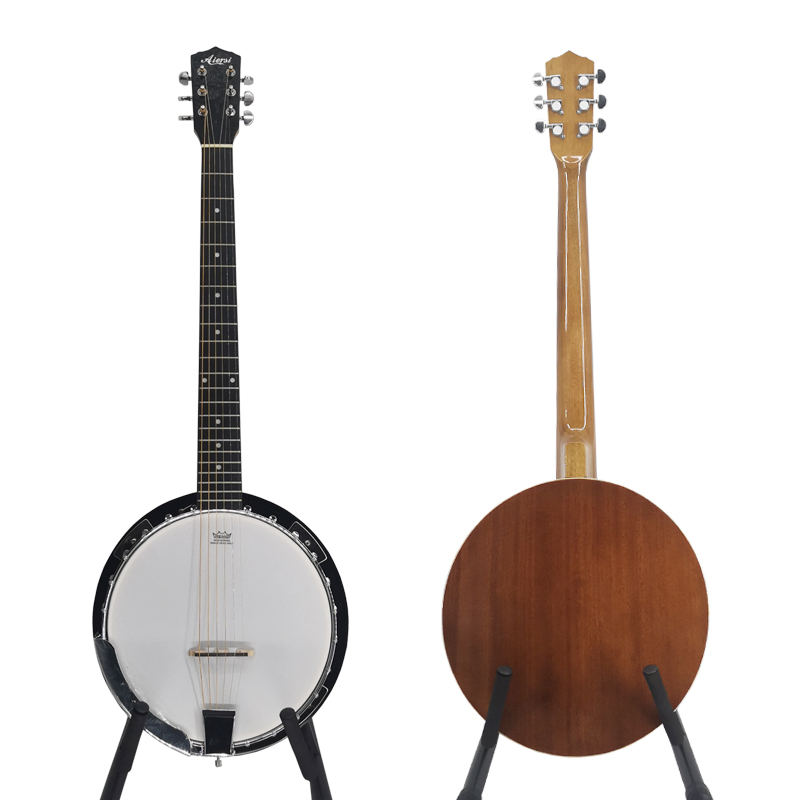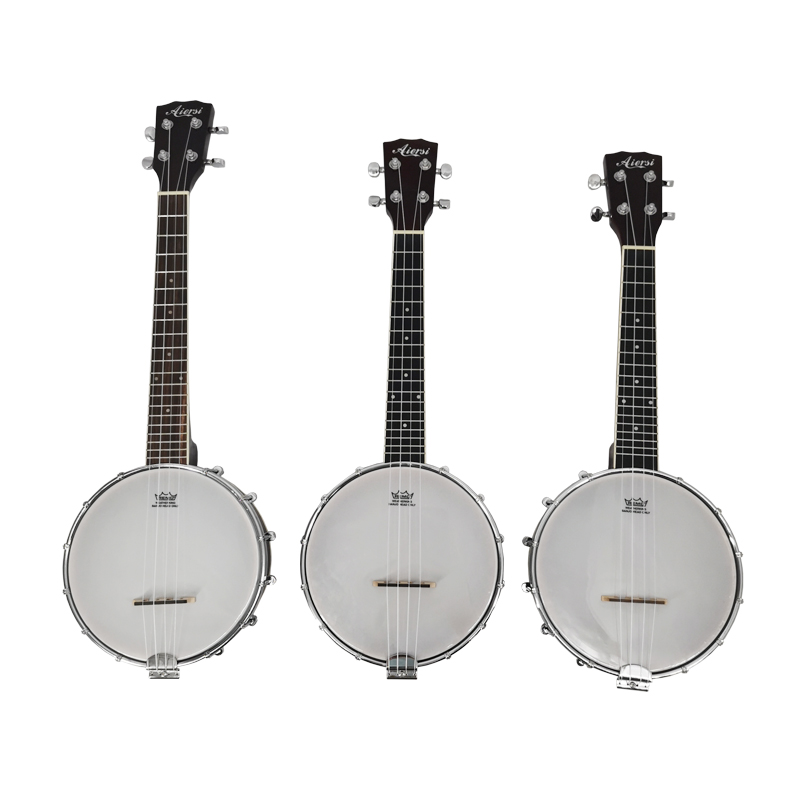There are both open-back and resonator-equipped versions of most of the more common banjo types.
Resonator banjos have a plate that’s fastened to the back of the body, or the “pot” as it sometimes called. This resonator plate’s purpose is to help project the banjo’s sound forward, giving the instrument more volume and punch in ensemble settings. It is for this reason that most bluegrass musicians, as well as many other banjoists opt for resonator-equipped banjos.

Open-back banjos produce a softer, mellower sound and work well in quieter settings. Due to their less complex construction they weigh less and often cost less than their resonator-equipped counterparts. Open-back 5-string banjos are popular with fans of American old-time music, and are usually played using variations of the clawhammer technique.
Most banjo bodies today have a circular wood rim that surrounds the body and a tensioned head made of synthetic material that resembles a drumhead. Unlike older banjos with heads made of animal skins or membranes, these modern heads aren’t affected by temperature and humidity.
Today’s banjos usually have metal strings with the fourth string being wrapped in an alloy. Occasionally, nylon strings are used to produce a mellower sound.
Banjo tuners differ from the worm gear-based tuners typically found on guitars. They are usually of the planetary-gear type or are friction-type tuning pegs. One mark of a quality banjo is the smooth operation of its tuners allowing easy initial tuning of the strings and tuning stability when played.
Modern 5-String Banjos
Unlike other stringed instruments such as the guitar, the strings on a banjo don’t go from lowest to highest across the fingerboard. Instead, from low to high they follow this arrangement: fourth, third, second, first, and fifth. The fifth string, which produces a drone and is also called the “thumb string,” is attached to a tuner mounted on the neck at the fifth fret, making it three-quarters the length of the other full-length strings. It’s most often the same gauge as the first string.

Special fifth-string capos are available to alter the tuning of the drone string beyond the one or two semitones allowed by its tuner. There are many tunings used on 5-string banjos with open-G (G-B-G-B-D) being the most common one used in bluegrass. In old-time music, many tuning variations are used including double-C (G-C-G-C-D) and open-D (F#-D-F#-A-D). These tunings frequently are moved up a tone by either tuning the strings to the higher pitch or using a capo.
Modern 4-String, 6-String, and Banjoleles
There are two forms of 4-string banjos: the plectrum and tenor. The plectrum is similar to a 5-string banjo, but lacks the drone string. Primarily played in dixieland bands, it’s strummed with a guitar pick. The tenor has a shorter scale and is popular with traditional Irish music players.

6-string banjos in various forms have been around since the mid-19th century. A popular hybrid variation of the 6-string is the guitar-tuned banjo. Because it is tuned like a guitar, it makes a great crossover instrument for guitarists while retaining the sound of a standard banjo.

The banjolele is a instrument that offers the portability and easy learning curve of a ukulele with a sound that resembles a small banjo. With its 4 strings, shorter neck, and smaller diameter head, banjoleles are easy to play and integrate well in quieter acoustic ensembles.
